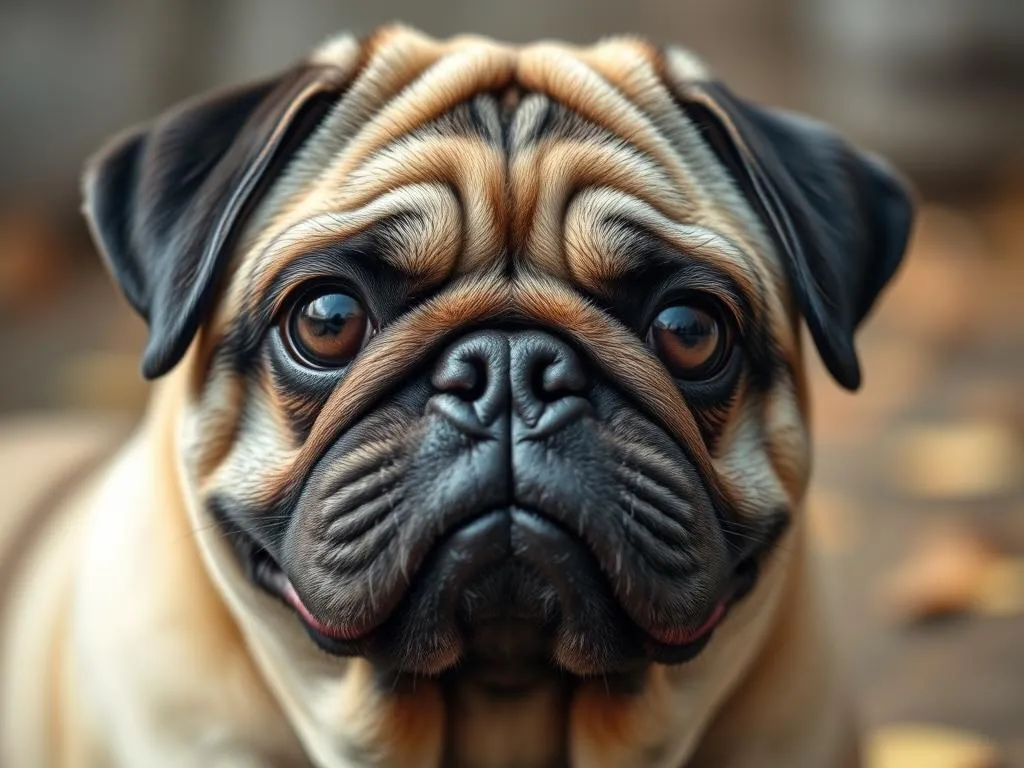
Introduction
Pugs are charming little dogs that have captured the hearts of many pet lovers around the world. With their wrinkled faces, curled tails, and playful personalities, they are often seen as the epitome of companion animals. However, before bringing a pug into your home, it’s essential to understand the pug pros and cons to determine if this breed aligns with your lifestyle and expectations. This article aims to provide an in-depth analysis of the pug breed, allowing potential owners to make informed decisions about whether to adopt one of these delightful pets.
Section 1: History and Origin of Pugs
Early History
The history of pugs can be traced back to ancient China, where they were bred as companion dogs for royalty. These small, charming canines were highly valued during the Chinese dynasties, often pampered and kept in luxurious surroundings. Pugs eventually made their way to Europe in the 16th century, where they gained popularity among the aristocracy, including notable figures like William III of the Netherlands, who had a pug named Pompey.
Breed Standard and Recognition
Pugs are recognized by major kennel clubs worldwide, including the American Kennel Club (AKC) and The Kennel Club (UK). According to these organizations, the breed standard emphasizes their compact, muscular build, distinctive facial features, and lively temperament. Over time, pugs have maintained their classic appearance, but variations in traits such as size and color have emerged, contributing to their unique appeal.
Section 2: Physical Characteristics of Pugs
Size and Weight
Pugs are classified as a toy breed, typically standing between 10 to 14 inches tall at the shoulder and weighing around 14 to 18 pounds. Their compact size makes them suitable for various living situations, including apartments and smaller homes. Compared to other toy breeds, pugs are sturdier, with a more robust build that allows them to withstand playful interactions.
Coat and Colors
Pugs have a short, smooth coat that is relatively easy to maintain. Common coat colors include fawn, black, and apricot, often with a distinguishing black mask. Grooming needs are minimal, with occasional brushing to manage shedding. Pugs are known for their moderate shedding levels, which can be a consideration for potential owners with allergies.
Distinct Facial Features
One of the most recognizable characteristics of pugs is their unique facial structure. Their short snouts and large, expressive eyes give them an endearing appearance. However, this brachycephalic feature can lead to health issues, such as breathing difficulties, especially in hot weather or during physical exertion. Understanding these potential health implications is crucial for prospective pug owners.
Section 3: Temperament and Behavior
General Personality Traits
Pugs are known for their affectionate, playful, and sociable nature. They thrive on human interaction and are often described as “clowns” due to their charming antics. Compared to other small dog breeds, pugs are generally more adaptable to various lifestyles, making them suitable companions for families, singles, and seniors alike.
Interactions with Family and Children
When considering the pug pros and cons, it’s important to note that pugs can be excellent family pets. Their friendly demeanor makes them great companions for children, often forming strong bonds with them. However, supervision during playtime is recommended, as pugs can be sensitive to rough handling.
Compatibility with Other Pets
Pugs tend to get along well with other dogs and pets, although early socialization is key. Introducing a pug to existing pets should be done gradually, allowing them to adjust to each other’s presence. With proper introductions, pugs can coexist harmoniously with various animals, adding to their appeal as family pets.
Section 4: Health Considerations
Common Health Issues
While pugs are generally healthy dogs, they are prone to certain health conditions, especially related to their brachycephalic features. Common issues include respiratory problems, eye disorders, and skin conditions. Regular veterinary visits and preventative care can help mitigate these risks and ensure a long, healthy life for your pug.
Lifespan and Aging
The average lifespan of a pug ranges from 12 to 15 years, depending on genetics, care, and lifestyle. As pugs age, they may require special attention regarding their diet, exercise, and healthcare needs. Recognizing the signs of aging, such as decreased activity or changes in appetite, is crucial for providing the best care for your senior pug.
Section 5: Pros of Owning a Pug
Companionship and Affection
One of the most significant advantages of owning a pug is the companionship they offer. They are incredibly loyal and affectionate, often forming deep bonds with their owners. Pugs thrive on love and attention, making them ideal pets for those seeking an emotional connection.
Low Exercise Requirements
Pugs have moderate exercise needs, making them well-suited for apartment living and less active households. A couple of short walks each day, combined with playtime, is usually sufficient to keep them happy and healthy. This characteristic makes them ideal for busy individuals or families who may not have time for extensive outdoor activities.
Adaptability and Trainability
Pugs are relatively adaptable and can adjust well to various living situations and routines. Although they can be stubborn at times, they are also intelligent, making them trainable with positive reinforcement techniques. Consistency and patience are key to successfully training a pug, as they respond well to rewards and praise.
Section 6: Cons of Owning a Pug
Health Risks and Costs
Potential owners should be aware of the pug pros and cons, particularly regarding health risks. Pugs can incur significant medical expenses due to their predisposition to certain health issues. It’s essential to budget for routine vet visits, vaccinations, and potential emergencies, as these costs can add up over time.
Grooming and Maintenance
While pugs have low grooming needs, they do require regular care to manage shedding and maintain skin health. Their facial wrinkles need to be cleaned to prevent infections, and occasional brushing is necessary to reduce loose hair. Additionally, pugs can be prone to allergies, which may require special attention from their owners.
Temperament Challenges
Despite their lovable nature, pugs can exhibit certain behavioral challenges. Stubbornness may arise during training, and some pugs may experience separation anxiety if left alone for extended periods. Addressing these challenges early on through training and socialization can help mitigate issues and foster a well-adjusted pet.
Section 7: Preparing for a Pug
Essential Supplies
Before bringing a pug home, it’s essential to gather the necessary supplies to ensure a smooth transition. Items needed include:
- High-quality dog food
- Comfortable bed
- Water and food bowls
- Leash and collar
- Toys for mental stimulation
- Grooming tools
Finding a Reputable Breeder or Rescue
Choosing the right source for your pug is crucial. Look for reputable breeders who prioritize health testing and ethical breeding practices. Alternatively, consider adopting from a rescue organization, where many pugs are in need of loving homes. Researching and asking for references can help ensure you find a responsible source.
Transitioning to a New Home
Transitioning a pug to a new home can be an adjustment for both the pet and the owner. Establishing a routine, creating a safe space, and gradually introducing new environments can ease the process. Patience and understanding are vital during this adjustment period, as pugs may take time to settle into their new surroundings.
Conclusion
In summary, owning a pug comes with its own set of pug pros and cons. They are affectionate companions that adapt well to various lifestyles, but potential health issues and behavioral challenges should not be overlooked. Ultimately, whether a pug is the right breed for you depends on your lifestyle, preferences, and ability to meet their needs. It’s crucial to conduct further research and reflect on your personal circumstances before making this important decision.
By understanding the unique traits and requirements of pugs, you can make an informed choice that benefits both you and your future furry friend.








